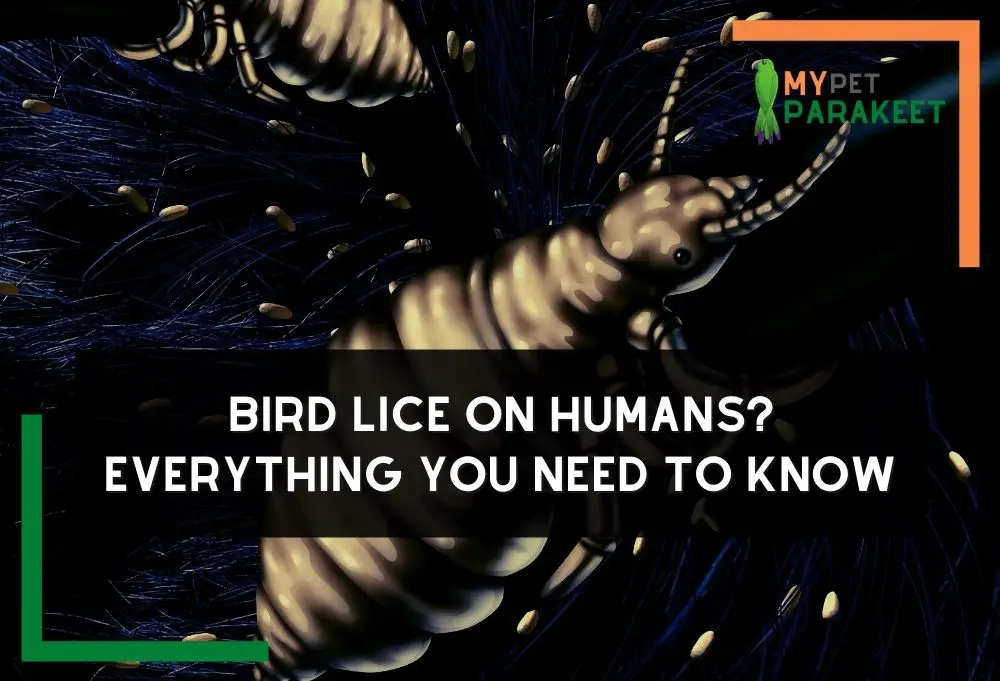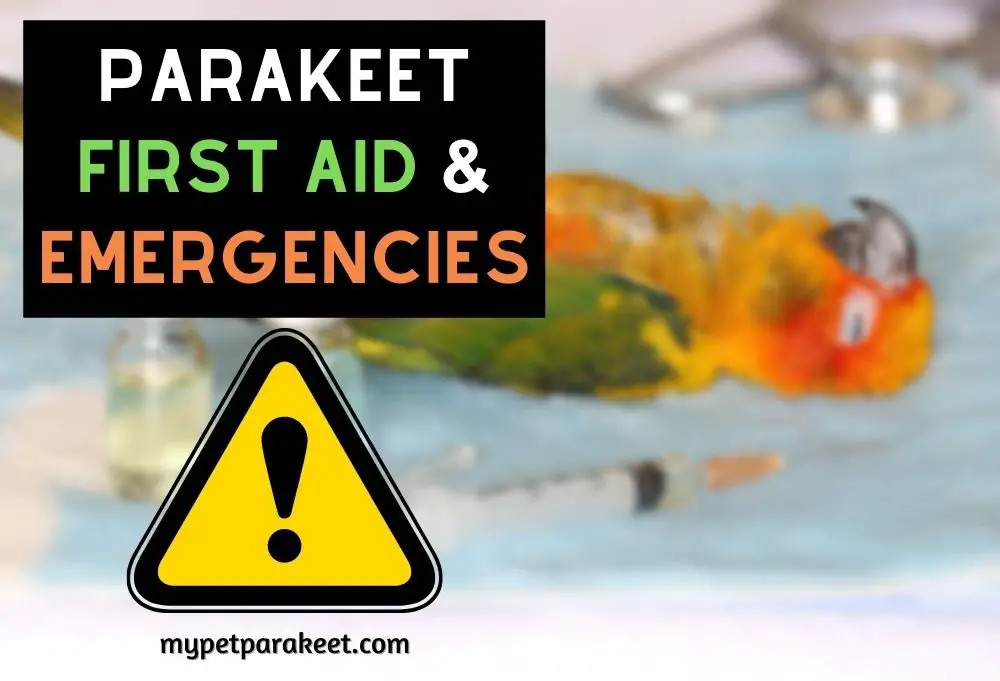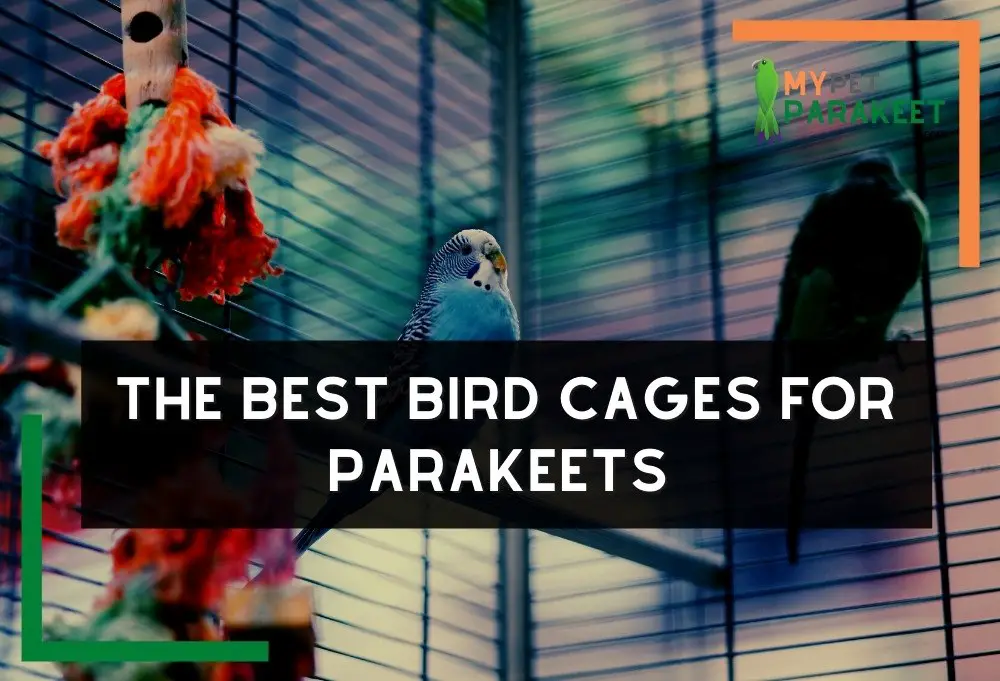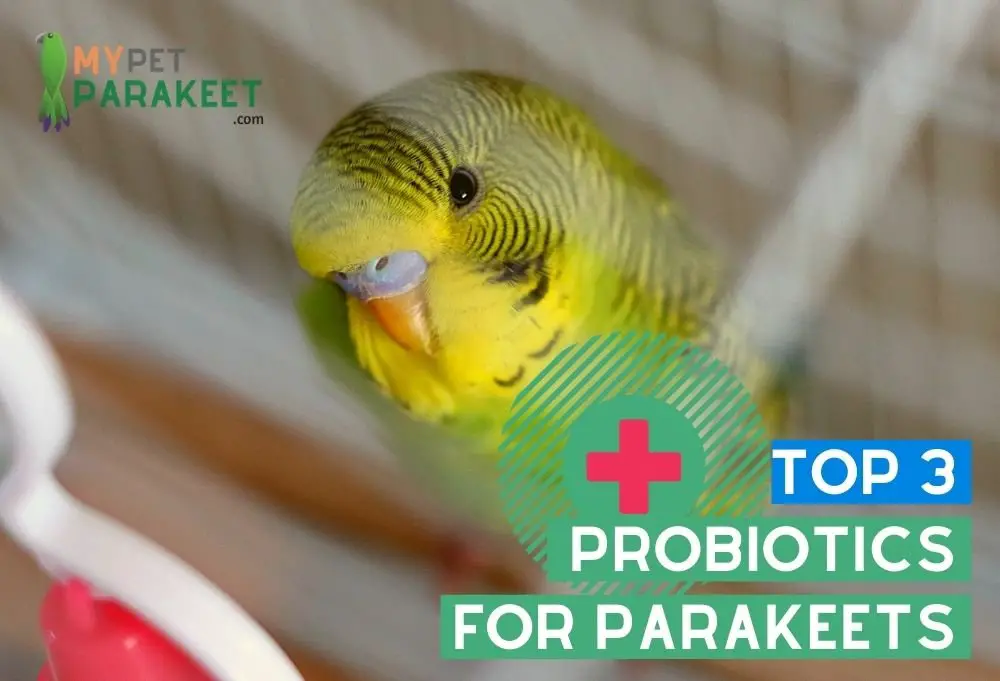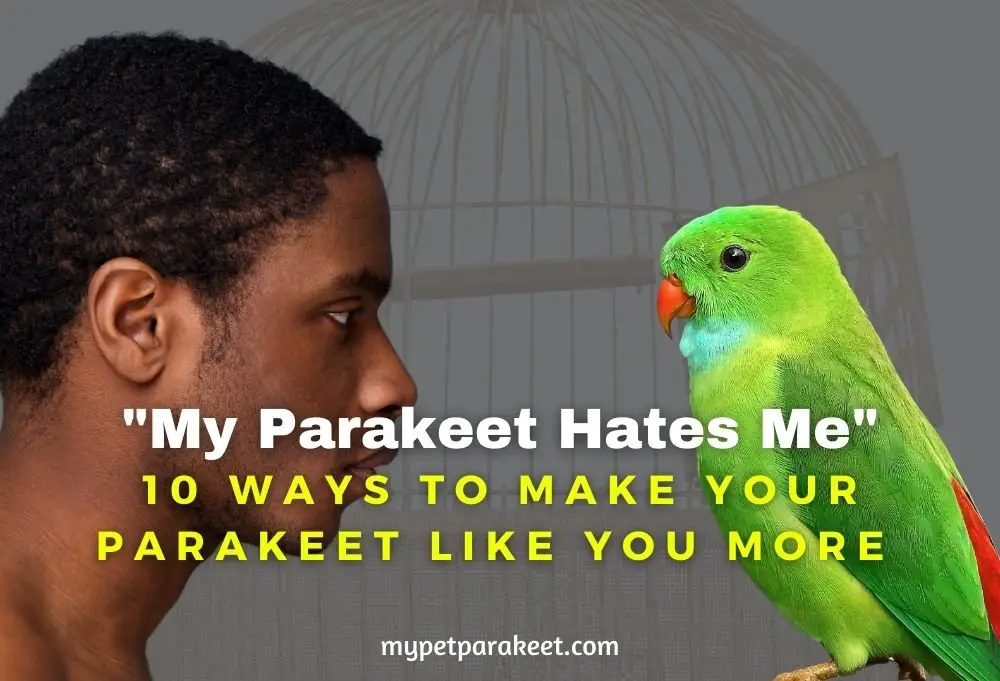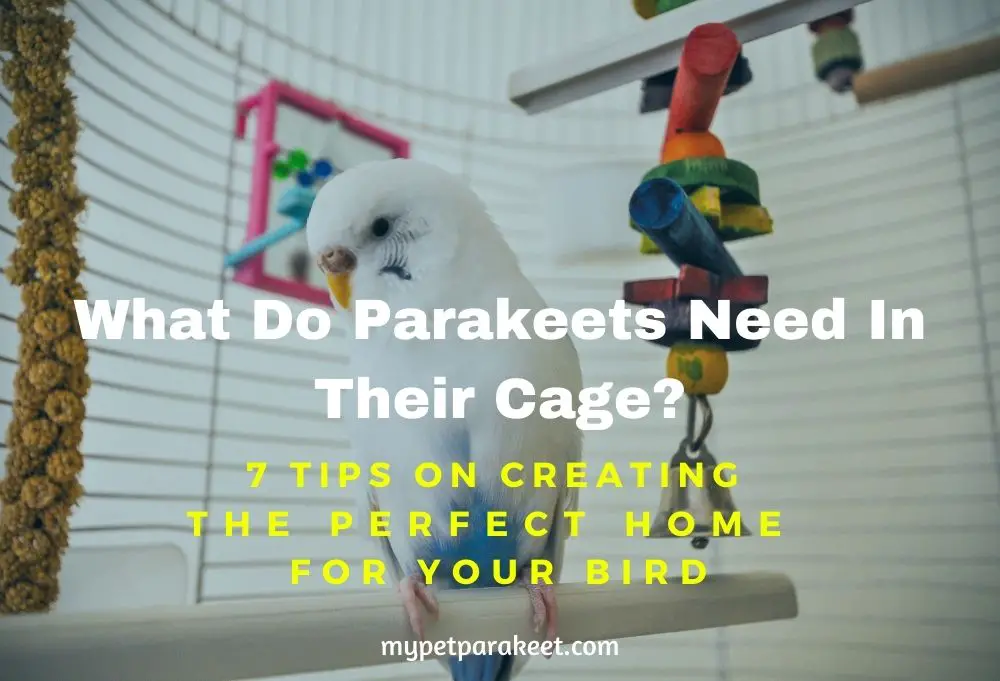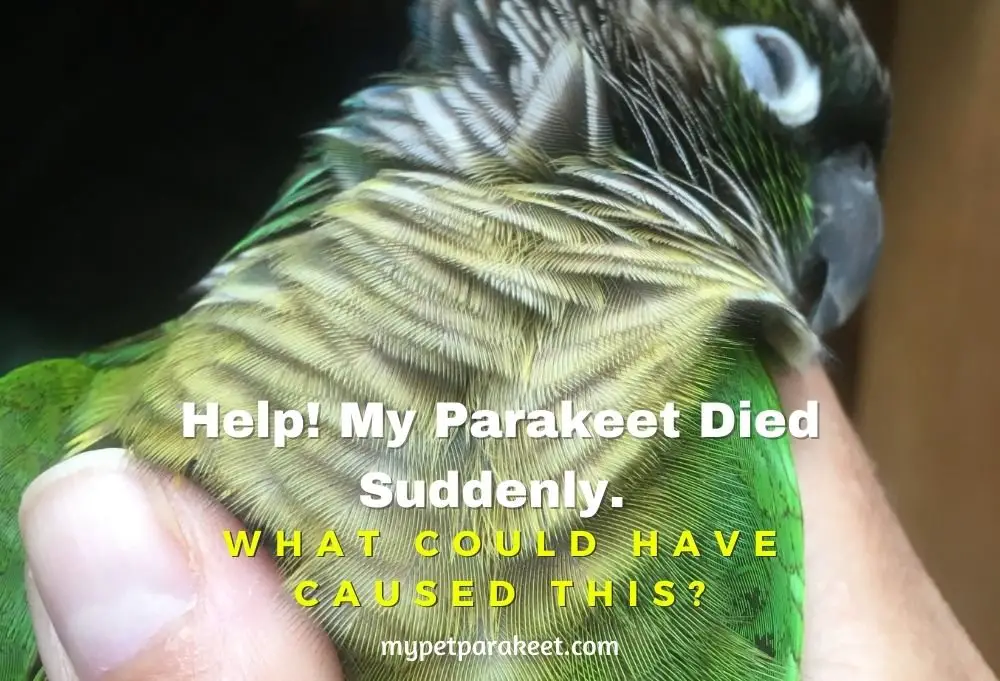Part of owning and keeping any type of animal in the home is the management of parasites and diseases. Pet birds have a few common parasites, such as bird lice, exclusive to avian species. Your pet parakeet is at risk of becoming a host for these lice, which will cause discomfort and poor well-being.
Parrot parasites are relatively common, and treatment is quick and straightforward. Preventing parasites on your parakeet and in your home is a matter of hygiene and good husbandry.
But keeping birds in the home may have some concerns for you, such as whether parasites such as bird lice can affect humans.
This post will cover all you need to know about bird lice and other external parasites, how they can affect both your pet parakeet and your family, and how to treat and prevent infestations.
What Are Bird Lice?
Bird lice are a parasite that infects avian species externally. They live on the skin of birds and feed on the feather shafts and dead skin of a bird. Bird lice are common in poultry and wild birds, but it is pretty uncommon in pet parrots. In fact, they are rarely seen on pet birds in the home, with many owners often misidentifying bird mites as bird lice.
Lice vs. Mites
Bird lice and bird mites are often used interchangeably, but the two parasites are entirely different species. Bird lice are a classic 6-legged insect and are much larger than mites.
Bird lice are visible to the naked eye and can be seen crawling on the skin of birds. In addition, their eggs are also visible and can be seen on the shafts of feathers. Bird lice do not bite the skin of birds but eat away at feather shafts and dead skin cells.
Bird lice can cause damage to skin and feather conditions but will not transfer disease between birds, and they do not interfere with the bloodstream of infected hosts. As mentioned above, bird lice are rarely seen in pet birds but are usually found on larger species such as poultry and wild birds.
Your parakeet is more likely to become the poor host of bird mites, which are more common in pet birds in the home.
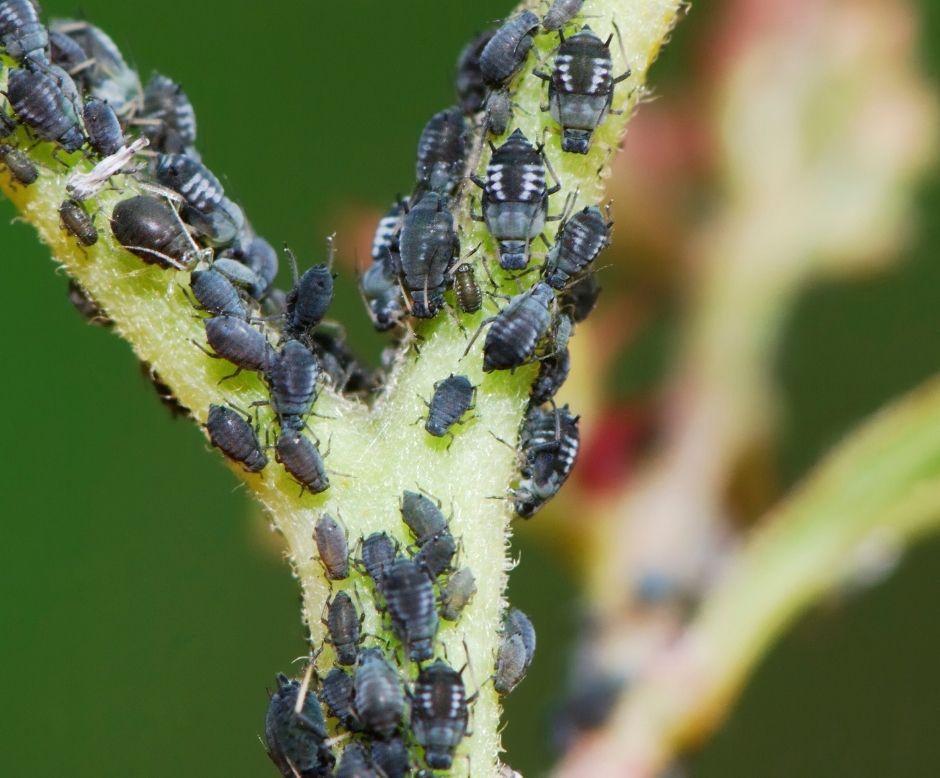
Mites differ from lice in size; they are tiny in size and are often not seen with the naked eye on the skin. Sometimes they may be seen moving on the skin in more exposed areas such as around the eyes, ears, and nares. Mites will also have microscopic eggs you will not be able to visibly see on your parakeet.
Mites are not insects but arthropods with 8 legs. Mites also differ from lice in their diet. Mites are blood-sucking parasites and gain sustenance from your pet bird’s bloodstream by biting them.
The saliva of mites is what causes swelling, irritation, and itchiness. Due to the feeding habits of mites, they can cause secondary infections from bites and even transfer diseases in the blood from one bird to another.
Identification
The naked eye can identify both bird lice and bird mites by visually spotting the parasites on your pet parakeet. Both species will stay close to a bird’s skin as this is where they will find their food source.
To look for them, pull back feathers to expose the skin and look for any movement. For bird lice, you will also be able to see their eggs connected to feather shafts, visible and tiny white dots.
Other signs of external parasites in parakeets include:
- Excessive grooming – the irritation of parasites can cause your parakeet to overgroom in an attempt to ease the crawling sensation of their skin.
- Scratching – biting parasites will cause irritation and itchiness at the bite site, and your parakeet will respond with an insatiable urge to itch it.
- Restless at night – mites are most active at night and will cause more irritation at these times. Restlessness and other signs of discomfort may be seen more at night than in the day.
- Feather loss – lice will directly damage feathers and make them look unkempt and scruffy. Mites can also have this symptom as a by-product of overgrooming and scratching.
See other reasons for feather loss with your parakeet here.
- Shaking – shaking the feathers is also a sign of irritation as your parakeet tries to relieve the uncomfortable feeling.
Read more about mites and external parasites.
Bird Lice On Humans: Can Bird Lice Affect Humans?
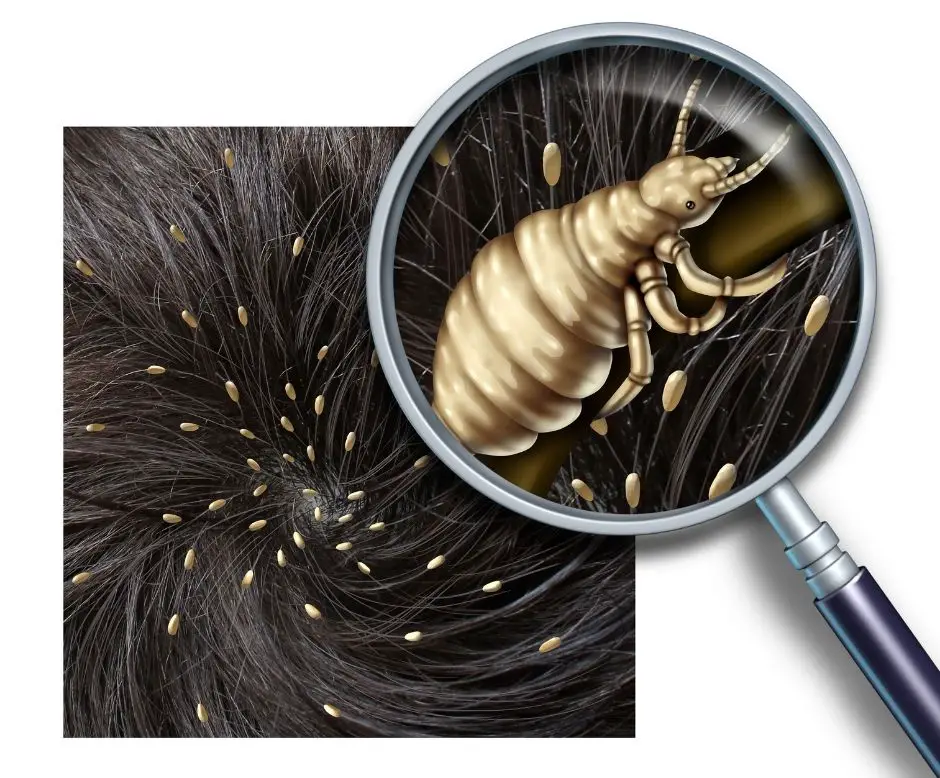
So, we now know how bird lice and bird mites can affect our pet birds but do we need to worry about being affected ourselves?
Both bird lice and bird mites feed exclusively on parts of birds. While they can bite humans, they cannot survive without an avian host.
If your parakeet has lice or mites, or you have a wild bird’s nest in your home, then you may run the risk of being bitten by these parasites yourself!
Bites from bird lice and mites do not have a significant risk. Usually, they just produce irritation, redness, and swelling at the bite site, much like the bite of other blood-sucking insects such as mosquitos. These bites can also promote secondary skin infections if they are scratched too much or come into contact with harmful bacteria.
Don’t panic! These parasites will not transfer any diseases to humans, nor will they contaminate your food sources! While we’re on the theme of debunking bird parasite myths, bird lice and common bird mites do not live under the skin of their hosts, so they will not dig under human skin either.
While some bird mites, such as scaley mites, will burrow under bird skin, they do not possess the ability to burrow into humans.
Reactions to these parasites’ bites may be more severe if you suffer from particular allergies or insensitivities.
Bites from bird mites are so similar to the bites of many other parasites, e.g., fleas, sandflies, mosquitos, that they can be hard to diagnose. The redness from bird parasites is often misdiagnosed as scabies or other skin conditions.
Due to the ambiguity of bird parasite bites, as a parakeet owner, keeping a lookout for parasites on or around your parakeet will help you find the cause of any personal bites or itchiness faster.
Can Bird Lice Infest My Home?
Parasites that live on pet birds such as lice and mites may affect humans with some general bites, but they need to stay with an avian host to survive.
These parasites can live anywhere from 3 days to 3 weeks away from their bird hosts. They rely on resources from your parakeet to survive. For this reason, they won’t “infest” your home in a way which they are persistent and complex to get rid of.
As long as the source of the parasites remains infected and in the home, you may be dealing with these parasites in the house. If the host is your own pet bird, ridding them of their infestation will usually solve the issue.
But there is another way bird parasites can get into your home that isn’t your pet parakeet! WIld birds that nest around your home may be infested. If a wild bird’s nest has a direct connection to your home, such as a window or vent, homes may get into your home without your own pet having any.
If this is the case, it is likely your parakeet will soon become infected as their adventurous parasites will look for a new host in the home.
Treating Bird Lice and Bird Mites
Since parasites can live on for weeks without an avian host, dealing with lice and mites on your parakeet is a two-pronged approach. You need to rid them from your bird and from your home simultaneously for effective eradication. Here’s our guide for dealing with these nasty critters.
Parakeets
If you suspect any parasites on your bird, you should see a professional veterinary to confirm. Your vet can provide you with the correct medication and dosage for a safe treatment.
All birds in the household should be treated even if they don’t show any symptoms. External parasites are highly transferable and maybe in the early stages of infestation.
More on mite treatment in this post regarding parakeets’ grooming habits!
A very thorough clean of all your bird’s cage, equipment, toys, etc., will eliminate any straggler parasites hiding away and prevent reinfestation.
In The Home
To get rid of parasites around the home, you can isolate your bird’s cage outside (granted, it is neither too hot nor too cold for your parakeet.
Thoroughly clean the house via vacuuming. Vacuum daily for a minimum of one week to catch any parasites that continue to hatch. Warm wash sheets and furniture coverings to destroy remaining parasites and their eggs.
Running the dehumidifier will also be helpful as reducing the moisture in the home will assist in desiccating the parasites.
Find and remove any birds nests on or in the home. Depending on the type and size of wild birds nesting nearby, you may wish to hire someone professional to assist you in this. If the bird is native to your region call your local authorities for them to relocate them.
For Yourself
If you suffer from some bites from bird parasites, treatment is simple. Use topical creams to decrease inflammation and ease itchiness. Oral antihistamines can also help to reduce swelling and itch.
If you experience a secondary infection from a bite, see your doctor receive some oral antibiotics to help rid yourself of the infection.
Final Thoughts: Preventing Bird Parasites
While bird lice and mites can be a big issue for your beloved pet parakeet, they can also affect you and your family when inside your home.
To prevent contracting these parasites, ensure that you:
- Keep your parakeet’s cage clean
- Keep your home clean
- Seal open areas to the exterior of your homes, such as vents and holes
- Quarantine new birds on arrival at your house until you can ensure a clean bill of health
- Regularly check your parakeet’s skin
Avian parasites should be very rare with excellent husbandry and hygiene with your parakeet’s care and in your home! In the unfortunate event, you do have an issue with bird lice or mites, you should now be fully equipped to deal with the problem.
Here’s our full guide on cleaning your parakeets’ cage.
Rest easy knowing if promptly and adequately dealt with they pose little risk to you and your family.

